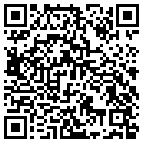You may wonder which barcodes are best, 1D or 2D? It is not which is best, but which is best for the required application.
Bar codes are similar to a font as they display information in a format that can be read electronically. (often alongside a human readable) They are very often used in connection with information held within a database. With the correct software, scanning a bar code of an item number can retrieve information about that item or product such as description, quantity and location.
A 1D barcode itself simply represents the item code in the form of any alphanumeric symbols. The more information placed in a 1D barcode the longer the barcode becomes making them very impractical for a large amount of information.
We are now seeing more use of 2-dimensional barcodes that can be used to contain multiple pieces of information in a minimal space. This a great scenario, however how does the ability to fit vast amount of information in a barcode make it easier to track inventory?
A 2D bar code can be used to encode data such as a serial number or item and location details for tracking. The information within the barcode can be captured in a single scan and with the correct software can populate a database saving a vast amount of input time and reducing the chance of input error. A simple example is where a label with a single barcode includes the Item, Package Quantity, and Unit of Measure. When the item is scanned, the data will automatically populate the corresponding field set in the database. The same can be applied to many applications that are using multiple barcodes on a single label or several labels representing the data. 2D barcode information is represented in a single bar code on a single label.
The compact size and the ability to put multiple fields into a single barcode are the FANTASTIC benefits of 2D technology. A 2D bar code can be read in any direction and can be read even with a mobile phone. In fact a 2D imager will normally allow users to capture both 1D and 2D barcodes at any angle.
The specific application being read by the scanner must be considered. If a product has several 1D barcodes that are placed close to each other (such as on the back of a cell phone or on a circuit board), a 2D scanner might have a tougher time reading the barcodes. Because the imaging scanner captures the entire image of the article to be identified, there is less accuracy than aligning the single red laser on the intended bar code.

